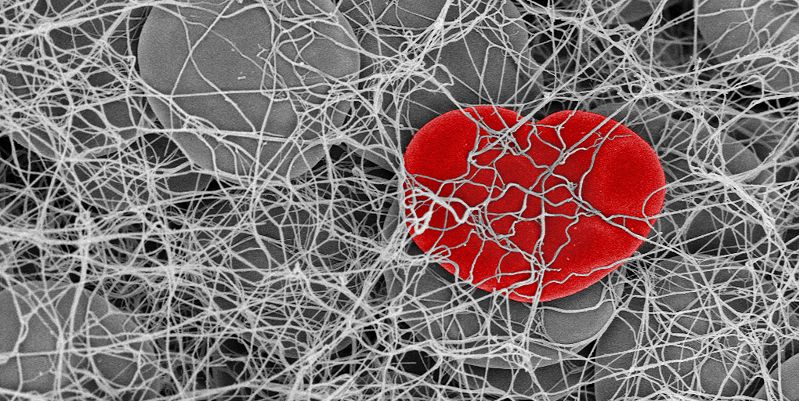
Researcher Fraser Macrae is used to studying the wonders of the human body in intricate detail…but there was one sight that stopped him in his tracks.
Under the intense magnification of an electron microscope, he spotted a heart-shaped red blood cell. The cell had become entangled in the net-like fibres of a blood clot and this had compressed it into the shape of a heart.
He took a picture of the blood cell - and that has won him the British Heart Foundation photography competition, Reflections of Research.
Fraser, who works at the Leeds Institute of Genetics, Health and Therapeutics (LIGHT) at the University of Leeds, said: “The human body is amazing, particularly when you can see it at this very fine detail. But I was quite frankly amazed when I saw the blood cell which by chance had been squeezed into a heart shape.
“As someone who is investigating aspects of heart disease, it seemed to be very symbolic, and that’s why I decided to call the image ‘Getting to the heart of the problem’.”
The electron microscope - operating at 5,000-times magnification - brought to life structures that measure just a millionth of a millimetre but it can only take photos in different shades of grey, so Fraser restored the natural red-colour of the blood cell using photo software.
Union of science and art
Competition judge Christopher Jackson, royal photographer at Getty, the international picture agency, said: “This image tells a story of how science and art can come together to help advance our knowledge of modern medicine. At the same time, images like this give us the opportunity to appreciate the incredible beauty in something that is invisible to the human eye.”
Fraser added: “When combined, art and science can highlight beauty in unexpected places. At the same time it can help visualise the cutting-edge research being carried out into heart and circulatory diseases every day."
This is the second time Fraser has won the award. Two years ago he took the top prize for another image of the clotting process.
Working at LIGHT, Fraser is part of a research team looking at how blood clots form, a vital mechanism to stop blood loss when a blood vessel is damaged but one that can cause a stroke or heart attack when clots form in the wrong place.
He is trying to understand why people who have heart disease form clots that the body is unable to breakdown.
Each year in the UK around 100,000 people die from a heart attack or stroke caused by unwanted blood clots.
Photos help save lives
Simon Gillespie, Chief Executive at the BHF, said: “Science relies increasingly on ever more sophisticated imaging techniques to help us to see the cellular and molecular processes that conspire to create disease.
“Each of these images contains a wealth of information that scientists can use in their fight against cardiovascular disease. So whilst this competition is all about stunning imagery, it’s actually the story that the image tells that matters.”
The image was taken with a Hitachi SU8230: Ultra high-resolution high-performance cold field emission scanning electron microscope based in the School of Chemical and Process Engineering at the University.